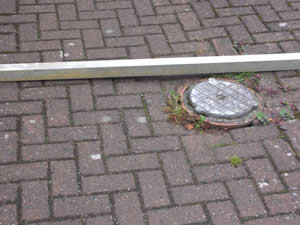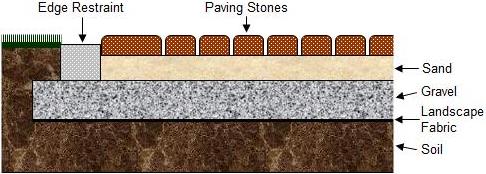
Figure 1 - Paving bricks that have settled
Leveling your paving bricks is not a difficult project, it only requires some muscle and patience.
There are two primary situations when it comes to paving bricks that have shifted or heaved.
- Edges of walkways, driveways or patios have shifted or collapsed.
If the paving bricks or concrete stones on the edges of your patio, driveway or walkway have collapsed it’s generally because the edge surrounding the laid paving bricks or concrete stones did not have an edge restraint or barrier that prevented the top base material, usually a course sand, that is the primary support for the bricks or stones from washing away.
It is also possible that the lower base material, gravel or crushed limestone, was installed directly under the paving bricks or concrete stones rather than having it extend for a distance surrounding the laid paving bricks or concrete stones.
Figure 2 shows the correct installation of an edge restraint and the positioning of the lower base material – the gravel or crushed limestone.

Figure 2 - Proper bed for paving bricks or concrete stones
Of course, it is always possible that the paving bricks or concrete stones were installed directly over the soil that existed and that a proper base was never installed. If this is your situation, you should lift all of the paving bricks or concrete stones and re-lay them after you have installed a proper base for them. You will have continuous problems with the level of your paving bricks or concrete stones if you do not have a properly prepared base.
Additional information on the proper installation of paving bricks and concrete stones.
Although not as common, it is possible that the paving bricks or concrete stones were partially laid over an existing concrete slab or pad. This situation occurs when a homeowner wants to use paving bricks or concrete stones over an existing concrete slab or pad possibly because of surface deterioration of the concrete pad or slab and at the same time wants to make the paved area bigger – a wider driveway, walkway or a larger patio.
Figure 3 shows what the installation of paving bricks on a concrete slab may have looked like when it was originally installed.

Figure 3 - Paving bricks installed on a concrete walkway
The problem is that over time the settling of the paving bricks that are not on the concrete slab will be different than the settling of the paving bricks that are on the concrete slab.
Figure 4 shows what is likely to happen over time if the paving bricks were partially installed over an existing concrete slab.

